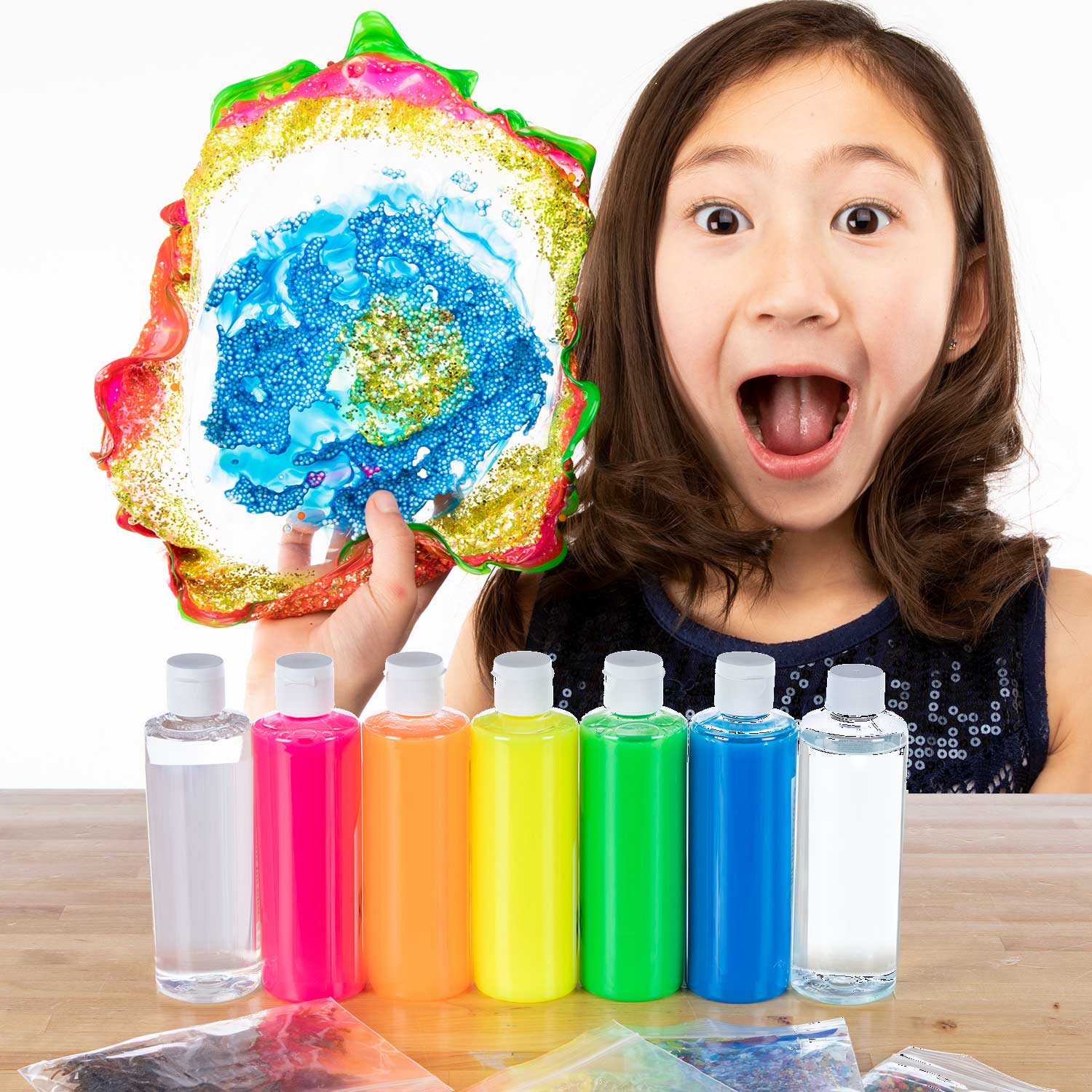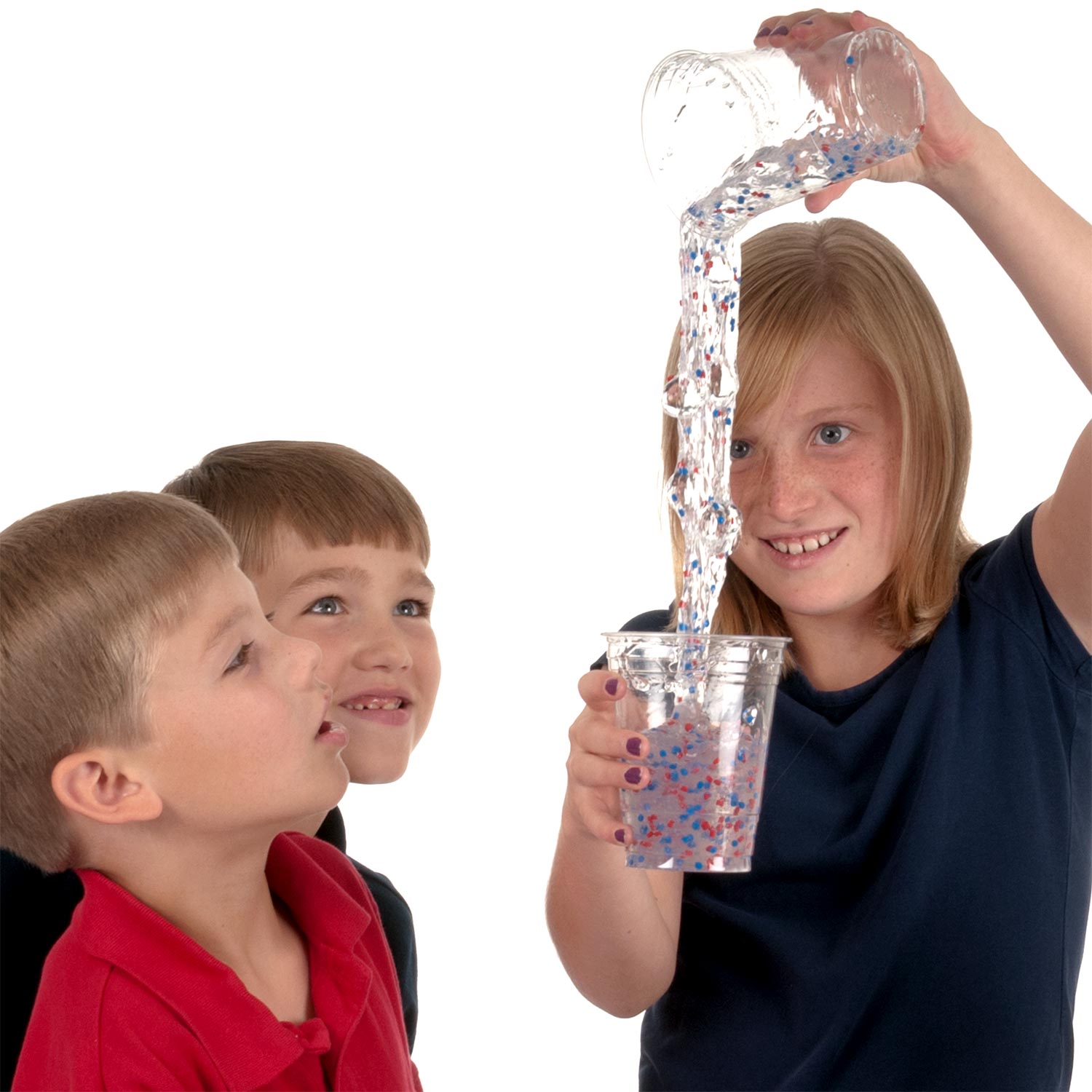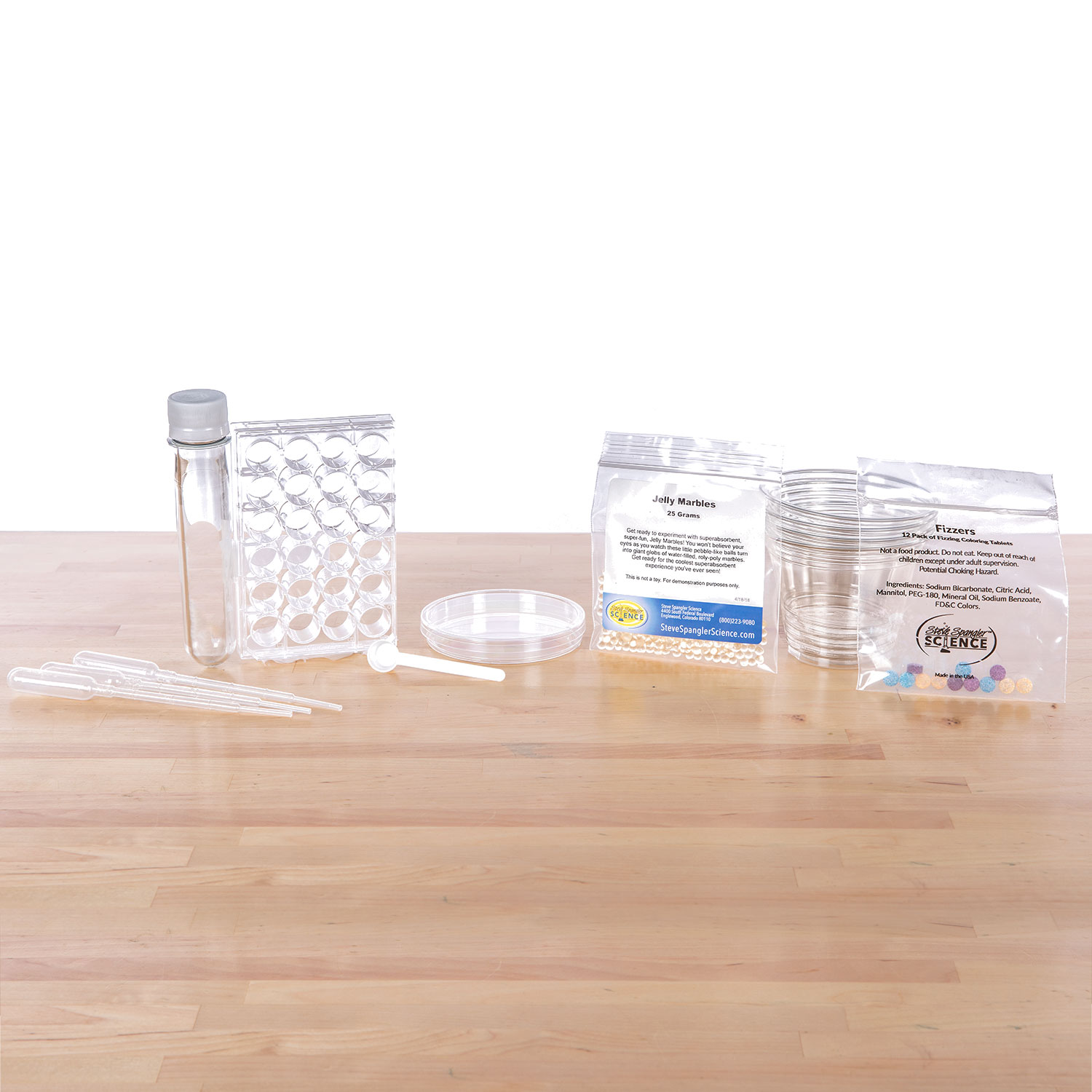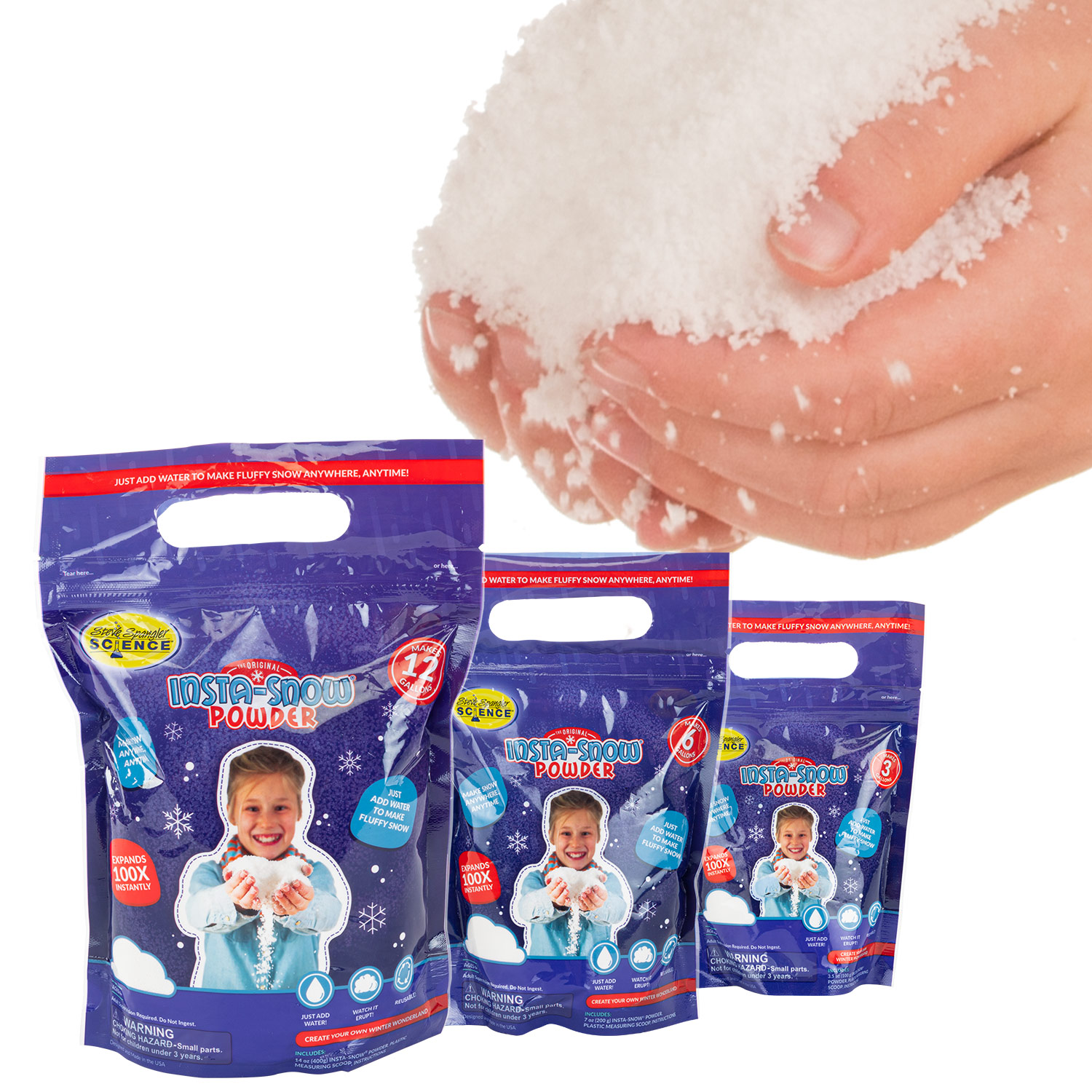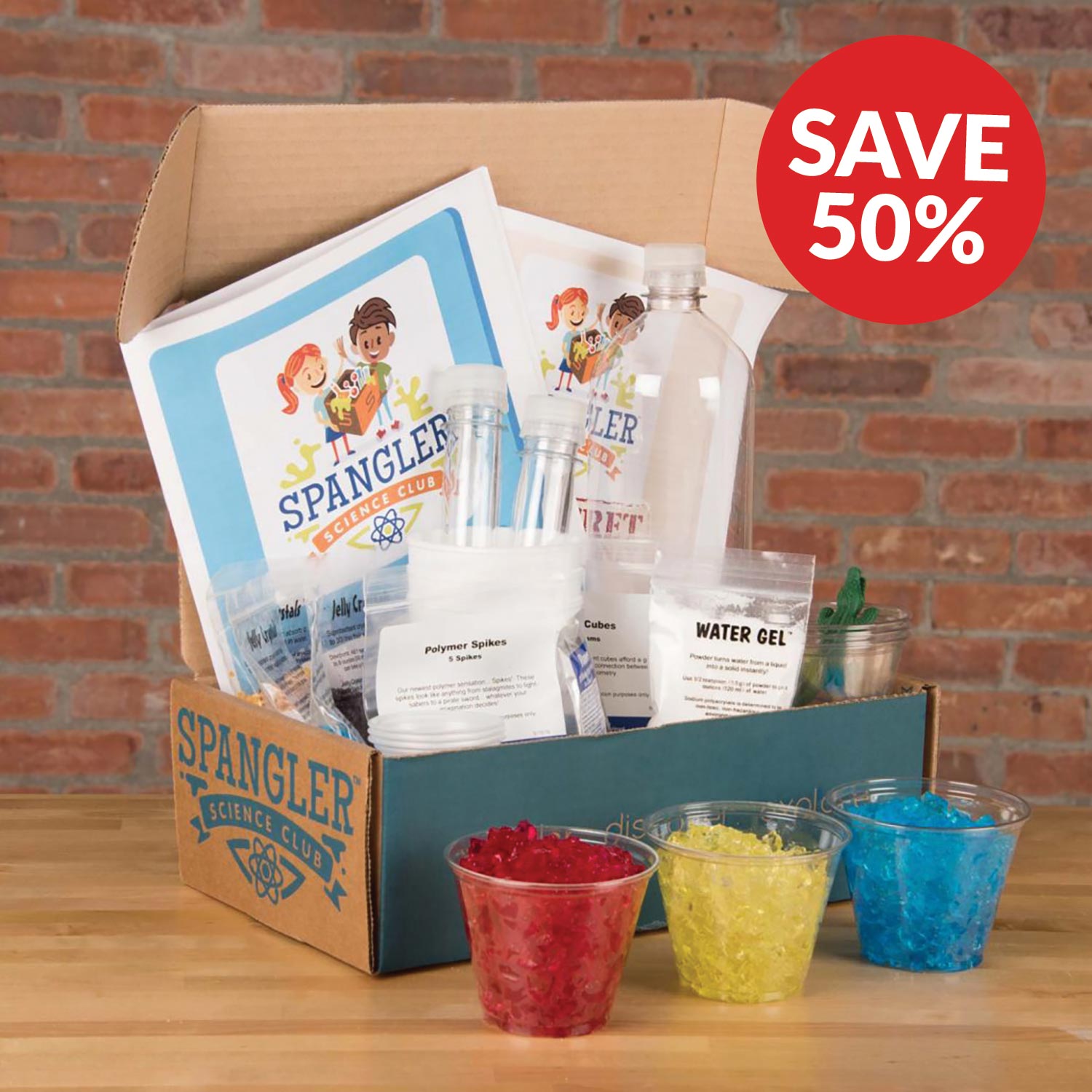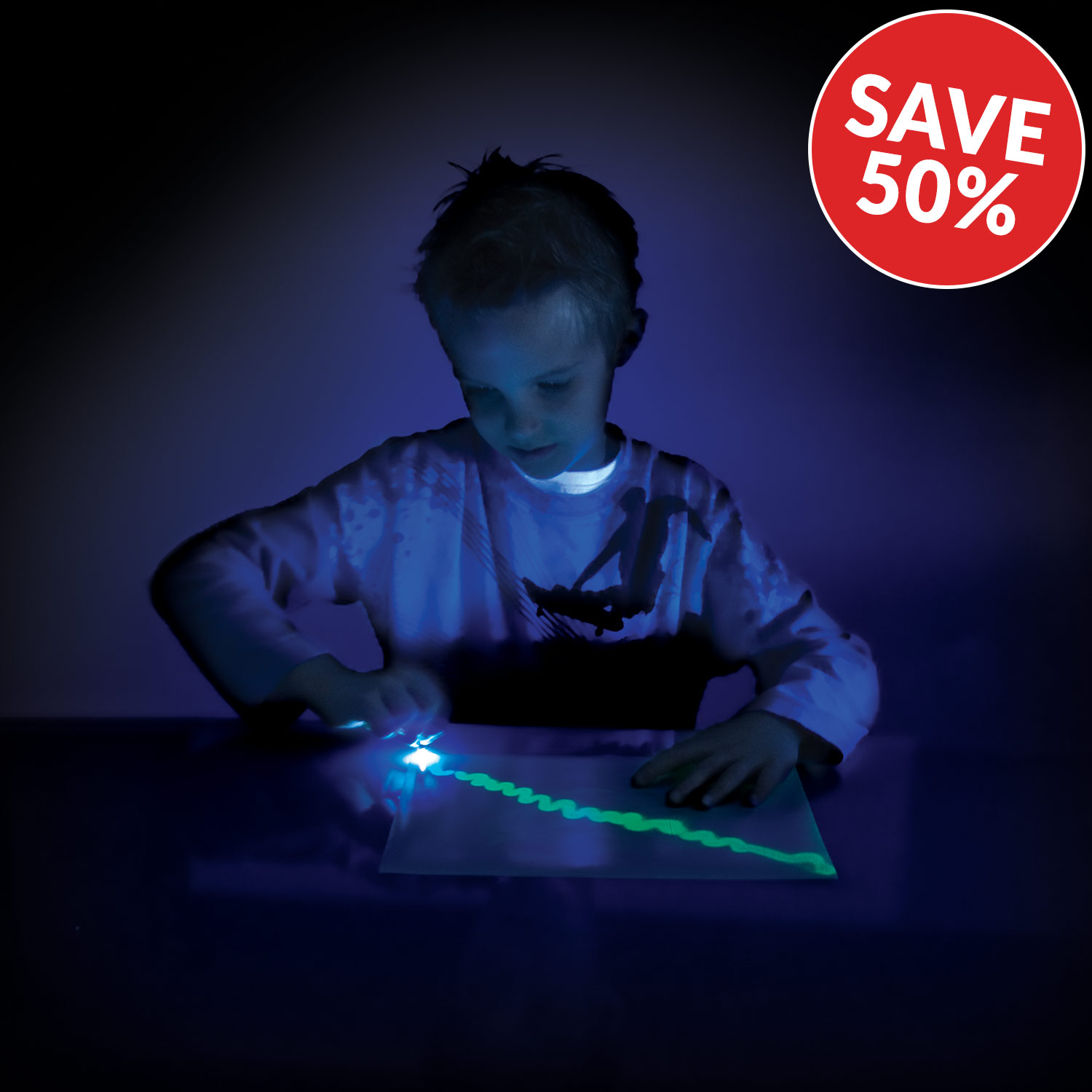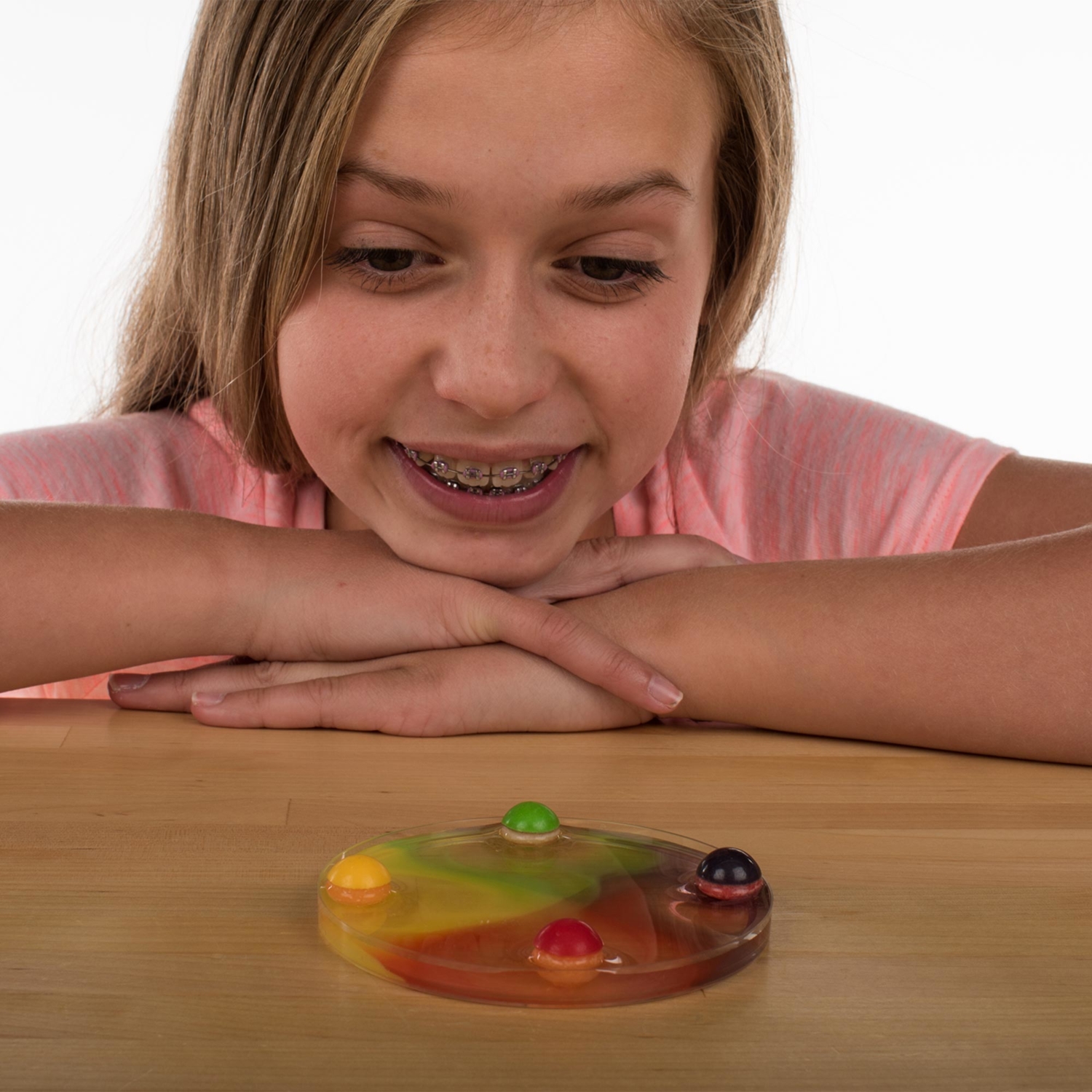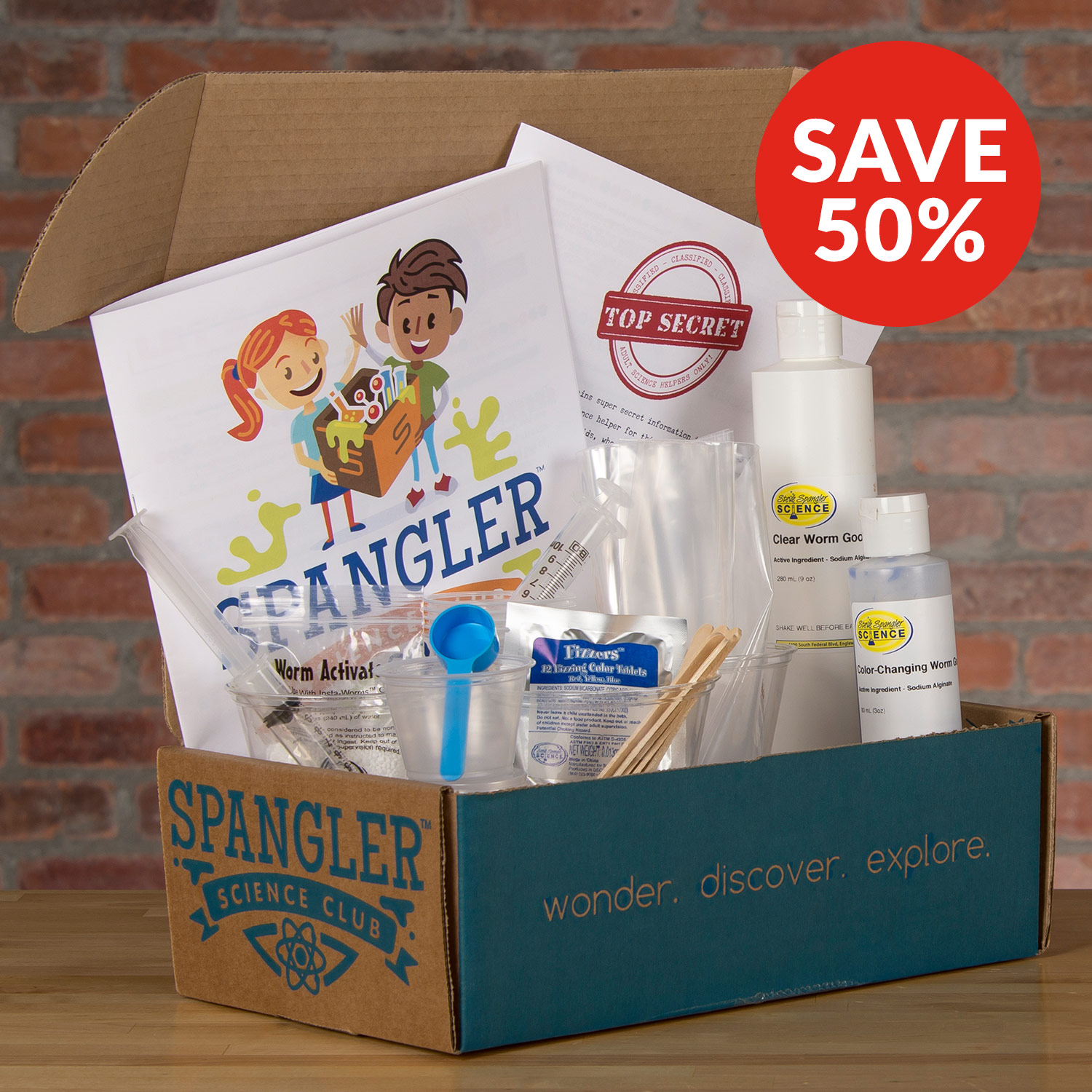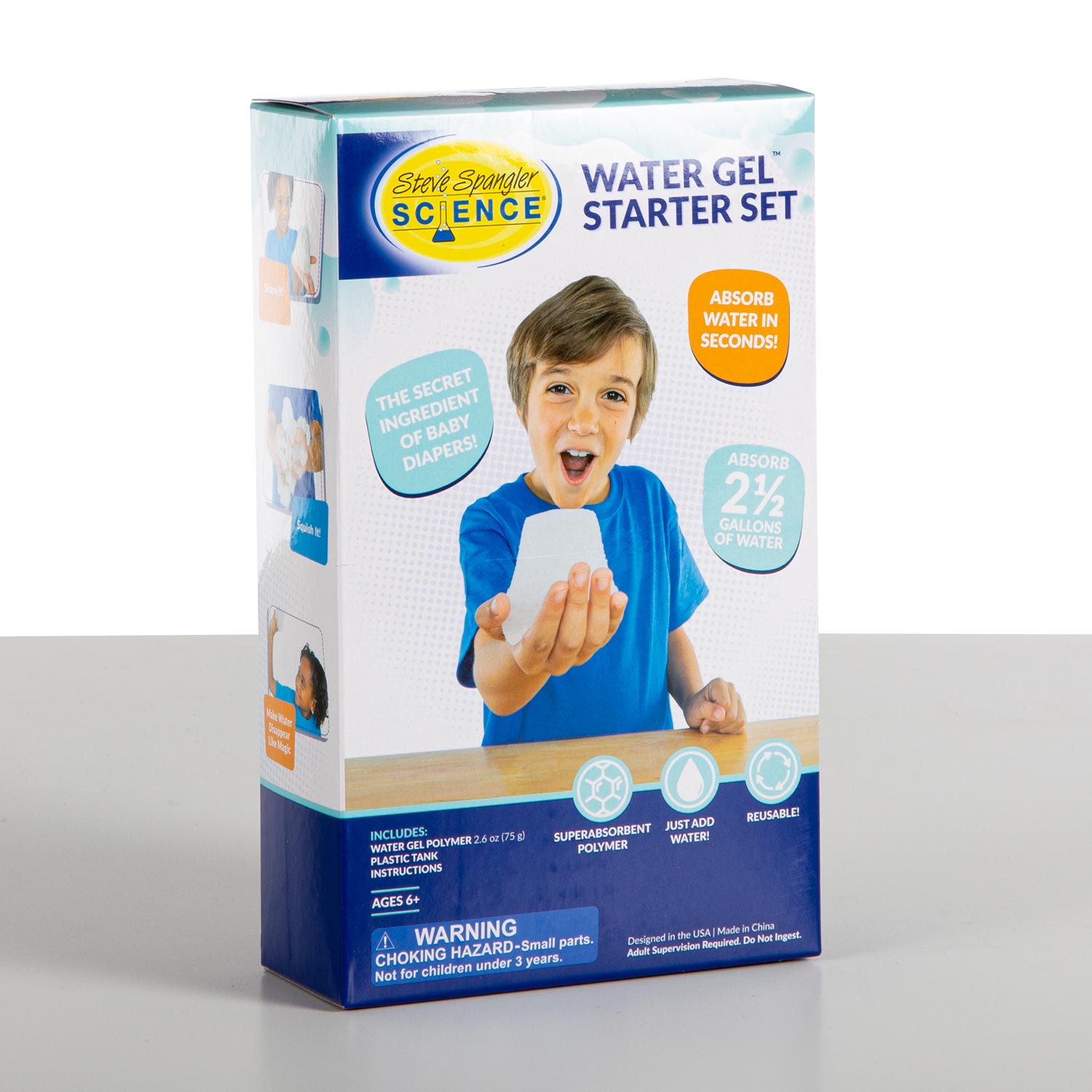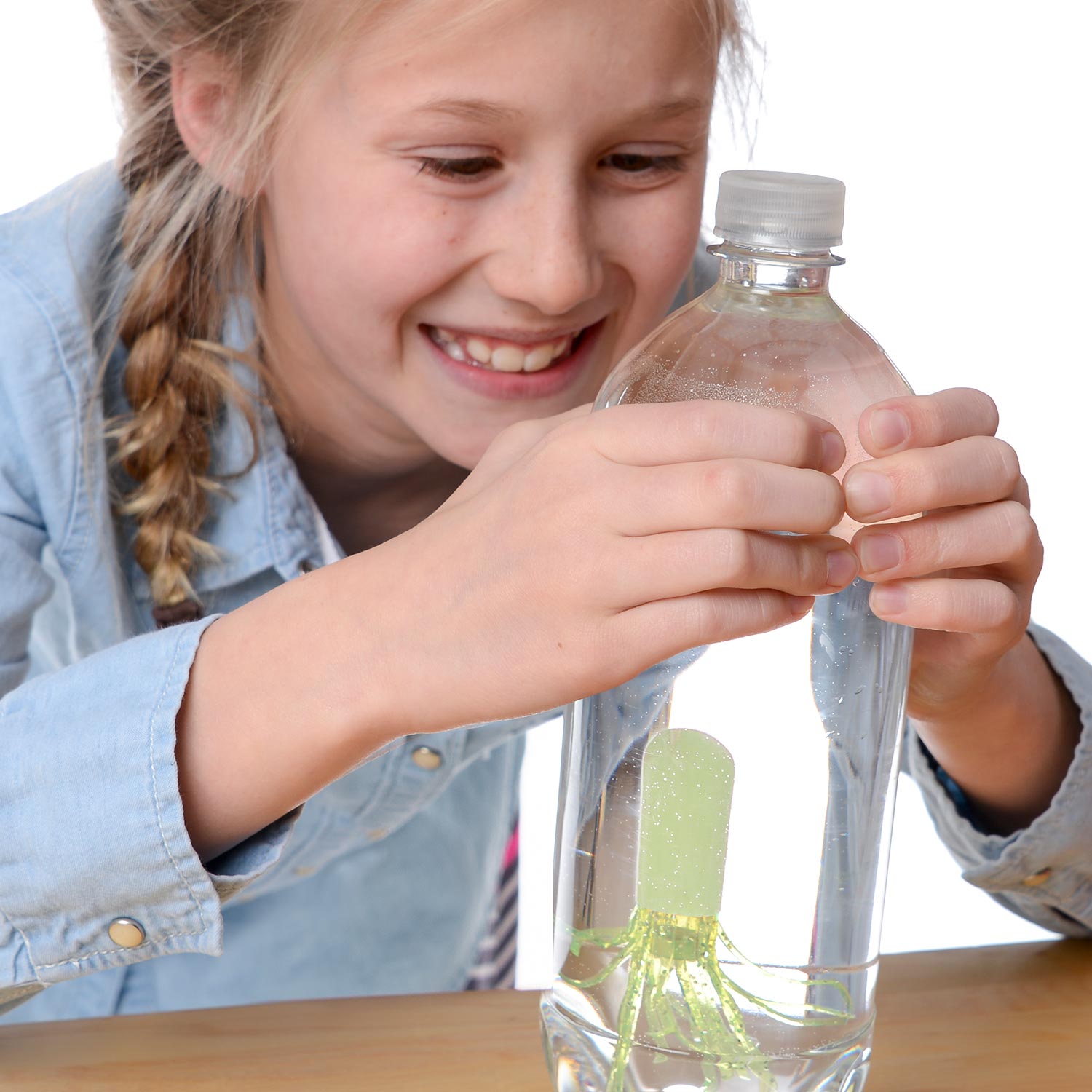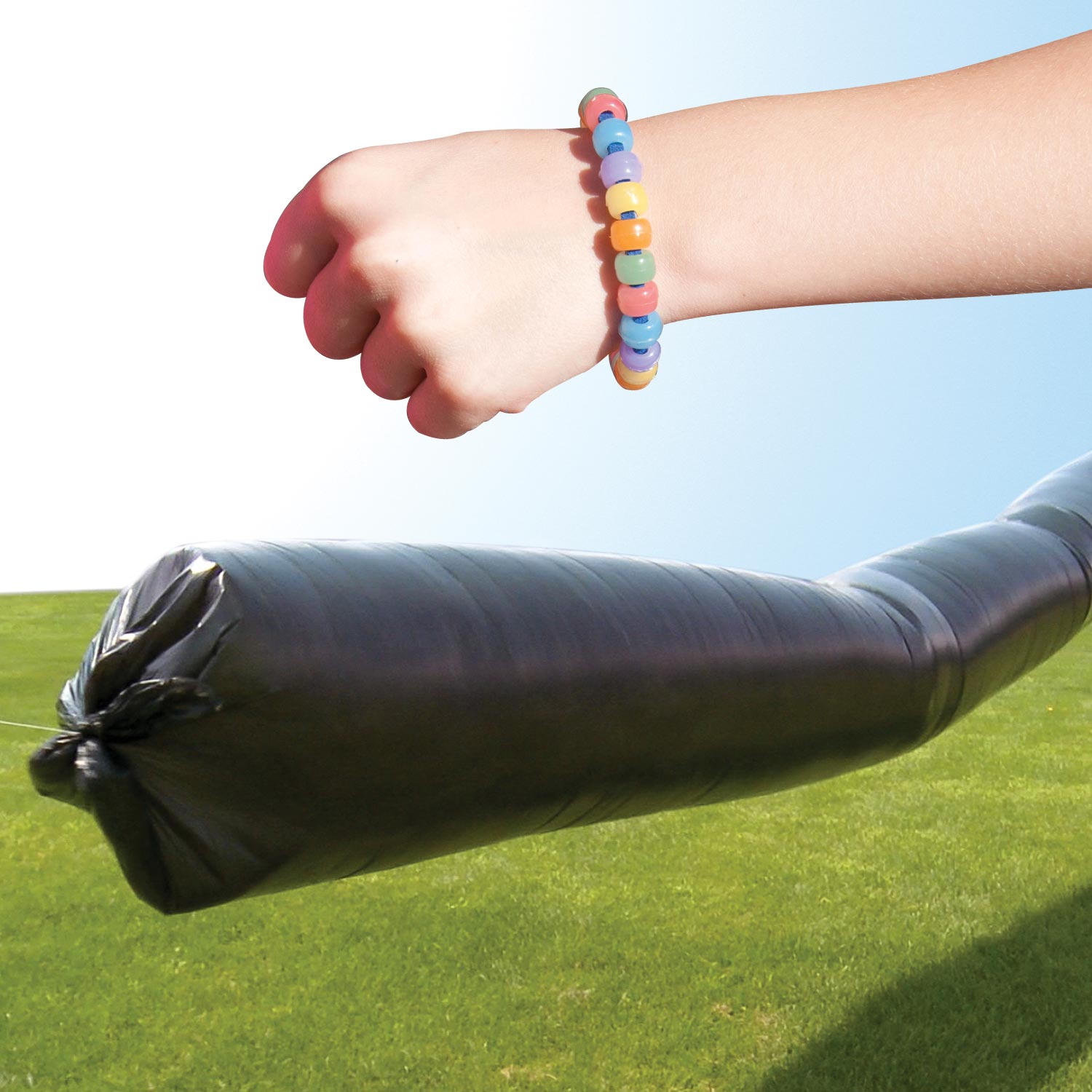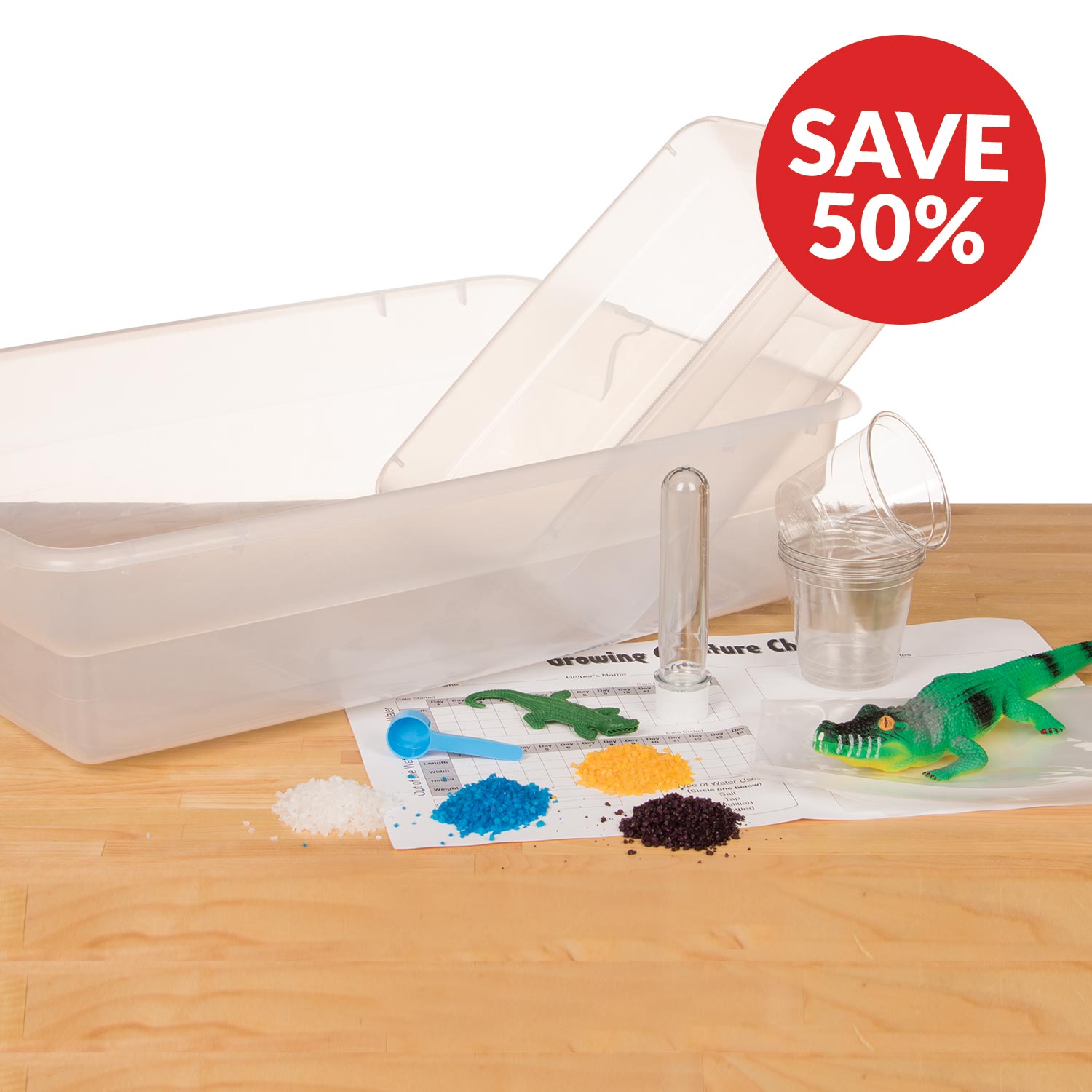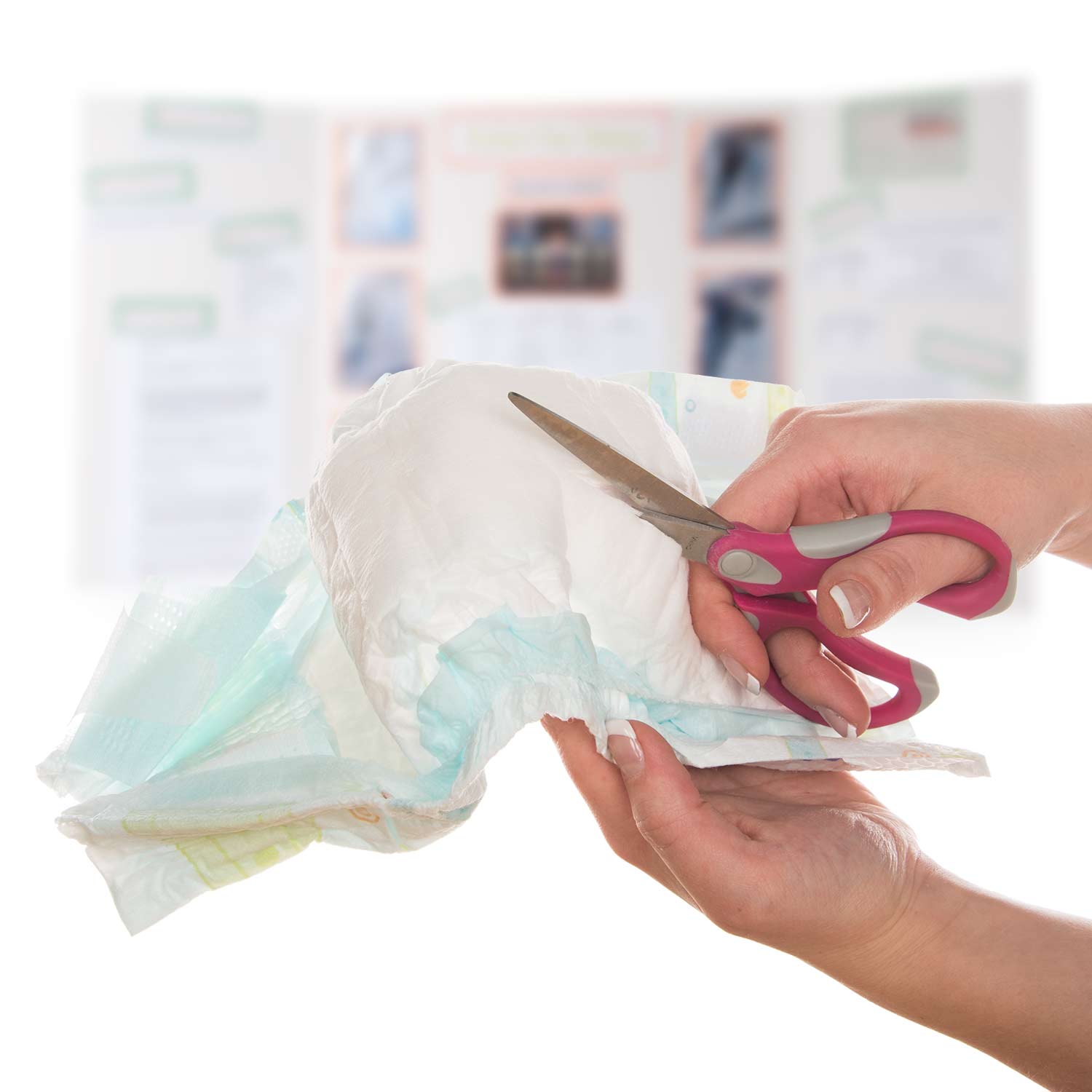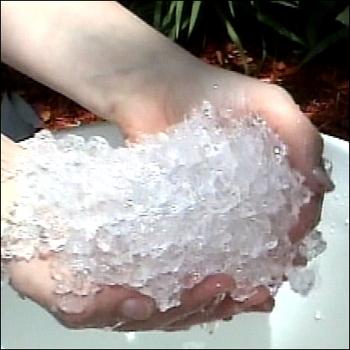
Water Absorbing Crystals
Super absorbent polymers are used in baby diapers.
**4-H 2008 National Youth Science DayExperiment**
The Baby Diaper Secret
One of the most common applications for super absorbent polymersis their use as the water-absorbing ingredient in baby diapers.That’s right… baby diapers! It’s possible that you mayeven have worn them for a few years not so long ago. Ask yourparents about the difference this kind of diaper made in theirattitudes about life.
In spite of their usefulness, these diapers can be a problem. Ifyou’ve ever observed a baby in diapers splashing in a wadingpool, you know that even one diaper can absorb lots and lots ofwater! Most public pools won’t allow them to be worn in thewater because huge globs of gooey gel can leak out and make a messof the filter system. Also, some folks used to throw them away intoilets. Not a good idea unless you’re a plumber.
But for the most part, these diapers are a great invention andmake for dry, happy babies!
Experiment
Finding the Polymer In a Real Baby Diaper
Start by collecting a number of disposable diapers. Any toddler’s diaper will work. Invite your students to carefully examine the disposable diapers. Is there any trace of powder-like super absorbent polymer? What do you see? How do you think the manufacturer hides the super absorbent polymer?
The Pouring Test
Determine the amount of water a disposable diaper can hold by slowly pouring about 1/4 cup (approximately 50 ml) of warm tap water into the center of the diaper. Hold the diaper over a dishpan or sink and continue to add increments of water. Tip the diaper back and forth after adding water each time. Record the amount of water the diaper holds before it becomes saturated and steadily leaks. Try testing different brands of diapers.
Finding the Secret Polymer
Place a new diaper on a piece of black paper. Carefully cut through the cotton lining and remove all of the stuffing material. Put this cotton-like material into a clean, zipper-lock bag. You should be able to see and feel traces of the polymer. Scoop up any of the polymer that may have spilled on the black paper and place it into the bag. Seal the bag (blowing a little air into the bag as you seal it to make the bag puff up like a pillow). Shake the bag for a few minutes to remove the polymer powder from the cotton. Notice that the super absorbent polymer powder is resting on the bottom of the bag. Remove the cotton from the bag and measure the amount of polymer that you extracted. If you like, add 4 ounces of warm water to the bag and time how long it takes to gel the water.
So, How Does the Powder Absorb Water?
Most common synthetic polymers are said to be hydrophobic (water-fearing), which means that they do not absorb water. Examples of these polymers might include products such as plastic cups, bags, and plastic toys. There are also hydrophilic, or water-loving polymers. Many natural polymers such as cotton fibers are hydrophilic. The polymer found in the diaper is an example of a synthetic, hydrophilic polymer.
Water-Absorbing Crystals
Purchasing Information: Super absorbent crystals are sold at lawn and garden centers under many different trade names including HydroSource or SoilMoist. Just ask for help in finding water-absorbing polymer crystals.
Super absorbent polymers are rapidly becoming one of the most exciting environmental education topics in classrooms worldwide. Today, super absorbent polymers are widely used in such applications as forestry, gardening, and landscaping as a means of conserving water. Imagine using a substance that could store water in the soil and then release it, as the plants roots need it. Indeed, the super absorbent polymer in this package is able to reduce the amount of time that is spent watering a lawn, a garden, or even a house plant by 50 to 80 percent! While we may consider water-absorbing polymers to be a modern convenience, imagine the impact that such technology is having on parts of the world that are plagued by drought.
Super absorbent polymer has hundreds of uses, is environmentally safe to use, and is one of the few fields of study where school age children are actually able to engage in scientific inquiry and make genuine contributions to science.
Science Activities
1. Growing Polymer Crystals:
Place 1/4 teaspoon of the polymer crystals in a quart size zipper-lock bag and add 8 ounces of tap water. Add 1 or 2 drops of food coloring to the water to make the experiment more colorful. Seal the bag and observe what happens to the crystals after 10 minutes, 30 minutes, and 1 hour. How has the polymer changed? Will the crystals get any bigger if you add more water?
Repeat the previous experiment, but this time try distilled water in place of regular tap water. Distilled water is similar to rainwater, so the experiment will show how much rainwater the crystals will absorb in the ground.
Will the polymer crystals absorb anything other than water? Try any of these liquids in place of water:
– Tomato juice
– Orange juice
– Vegetable oil
– Milk
– Soda pop
– Rainwater or melted snow
– Hot water
– Salt water
2. Shrinking Polymer Crystals:
Use the polymer from experiment #1 for this experiment. Remove the jelly-like polymer crystals from the zipper-lock bag and spread them out on a piece of wax paper. Using a ruler, measure and record the size of the crystals. Allow the crystals to sit in the sunlight for several days. As the polymer sits in the warm sunlight, the water will evaporate, and the crystals will shrink. After several days, measure and record the size of the same polymer crystals. If you previously added food coloring to the water in experiment #1, did the polymer crystals retain their color after the water evaporated?
3. Polymer Plant:
Grow grass seed, radishes, beans, or other fast-starting plants in a mixture of polymer and soil. The soil/polymer mixture should be half soil and half polymer crystals that have already absorbed water. Try growing the same seeds that you planted in the soil/polymer mixture in just plain soil and compare the growth at 2-day intervals for 1 or 2 weeks. Growing a polymer plant makes a great science fair project!
Will radish seeds grow in a cup of polymer crystals without soil?
Additional Info
To make this experiment into an awesome science fair project choose some interesting variables to study. For example, what brand of baby diaper absorbs the most water? What kind of plant seeds grow the best in Water Jelly Crystals? The possibilities are endless!
Look for Steve Spangler using the baby diaper experiment as the 2008 National 4-H Youth Science Day Spokesperson.



